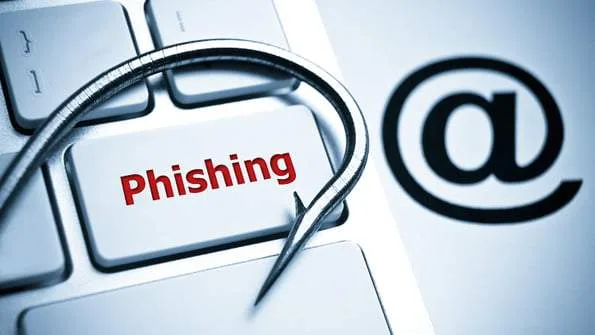An email attack is a message that is sent to a person’s inbox, usually with the intention of annoying or bothering them. This type of message can come from anywhere in the world, but the most common place people think of when they hear the term “email harassment” is a workplace
Phishing email data indicates that approximately 1.2% of the total volume of emails transmitted are deemed malicious. This percentage corresponds to a staggering 3.4 billion phishing emails being distributed on a daily basis.
Compelling recent statistics on phishing attacks for 2023:
- According to the F5 Labs Phishing and Fraud Report of 2020, a significant 55% of phishing websites employ targeted brand names, making it easier for them to acquire sensitive information.
- In the United States, a notable 84% of organizations have reported that regular security awareness training has proven effective in reducing the susceptibility of employees to falling victim to phishing attacks.
- In Australia, a concerning 92% of organizations experienced a successful phishing attack, marking a substantial 53% increase from the previous year (2021).
- Among the highly impersonated brands in phishing attempts, Amazon and Google lead at 13%, followed by Facebook and Whatsapp at 9%, and Netflix and Apple at 2%.
- According to IBM’s 2022 Data Breach Report, breaches resulting from phishing attacks took the third-longest mean time to identify and contain, averaging 295 days. This underscores the persistent and stealthy nature of such cyber threats.
Frequency of Phishing Attacks: As predicted in 2018, the frequency of ransomware or phishing attacks has reached an alarming rate, occurring approximately every 11 seconds. This relentless assault on digital security underscores the urgency for individuals and organizations to bolster their defenses against this ever-present threat.
Prevalence of Phishing in Data Breaches:
Phishing scams have solidified their position as one of the leading cybercrimes, accounting for nearly 22 percent of all data breaches, according to the FBI’s 2021 IC3 Report.
The gravity of the situation is further emphasized by the fact that a staggering 83% of companies experienced phishing attacks in 2021. This trend demonstrates the resilience and adaptability of phishing techniques in exploiting vulnerabilities across various sectors.
Verizon’s 2022 Report on Data Breaches:
Verizon’s 2022 report sheds light on the commonality of phishing attacks, revealing that 36% of all data breaches involved phishing tactics.
The statistics highlight the prominence of phishing as a favored method among cybercriminals, showcasing its efficiency in breaching digital defenses.
Scale of Phishing Emails
Phishing email statistics paint a concerning picture of the sheer volume of malicious emails circulating daily. Approximately 1.2% of all emails sent are identified as phishing attempts, translating to a staggering 3.4 billion phishing emails daily. This means that for every 4,200 emails sent, one is almost certain to be a phishing scam email, underscoring the need for heightened vigilance.
Spear-Phishing Targeting Businesses
Businesses find themselves in the crosshairs of cybercriminals daily, with 88% of organisations experiencing spear-phishing attacks annually, according to Norton’s statistics.
The 2019 Threat Report by Symantec further reveals that a significant 65% of cyber-attacks are orchestrated through spear-phishing techniques. This targeted approach emphasizes the need for businesses to implement robust cybersecurity measures to protect sensitive data and maintain operational integrity.
Economic Impact of Email Scams
The financial toll of email scams is substantial, with organizations losing significant sums to these malicious activities annually. While specific figures for 2023 may vary, the perennial nature of phishing attacks suggests that the economic repercussions are substantial and warrant ongoing attention and investment in cybersecurity.
As the first line of defense against such threats, improving email security is paramount in safeguarding sensitive information and preventing unauthorised access. ..
The internet has made it easy for anyone to send an email to another person. One thing that is different about email attacks is that the sender is behind the computer causing the problem. There have been cases where companies have actually had to sue someone over the messages that were being sent from their work computer.
Famous email attacks have even been used to get political candidates elected. When John McCain was running for president one of his main competitors for the presidential nominee emails that were hacked and spread across the internet.
No one really knows how much impact the leaked emails had on the election, but one thing is for sure; no candidate was able to run as cleanly as John McCain.
In one case, the emails had so many offensive and embarrassing words that many of the people who were voting for him simply melted down and couldn’t believe what they were reading. These are the types of things that make emails such a powerful instrument for people to use against you.
Email security refers to any systems, products, services, and applications designed to secure your email account and other email content from outside threats. This includes everything from phishing attacks to spyware, both of which can put your email inbox at risk and steal your personal information.
Most email service providers have integrated email security features designed to Keep you protected, but unfortunately these might not be good enough to prevent cyber criminals from accessing your sensitive information.
The best ways to keep your email account secure is by installing an email security suite that is installed on your computer and Internet connection through the use of firewall software. A good suite will monitor your incoming emails and can automatically delete any messages that are suspected of being spam. It will also ensure that all outgoing mail goes to the spam folder.
There are some email security features that you can add to your existing firewall programs such as anti-virus and anti-spam filters. There are a number of free or inexpensive email security services available online to help you with these functions, although it is recommended that you research your options before buying one.
Many free services will only work in conjunction with your existing email security services and won’t prevent or remove spam or viruses. Some programs are a lot more comprehensive, however.
If you want to take your email accounts protection to the next level, then consider investing in commercial email services that have more advanced and customisable features for prevention and detection of cyber attacks.
One of the most common types of attacks is called phishing attacks. Cyber criminals use spoofed email accounts to try and trick you into revealing your password or account information. Emails that come from legitimate companies usually contain a spoofed address, which the real company uses to generate a new password.
The purpose of phishing attacks is to trick you into revealing your sensitive information, which can allow the cyber criminals to access your email accounts.
Emails that contain a spoofed sender typically carry a downloader program that installs automatically when opened. When this happens, the user’s computer automatically sends out sensitive information to the message sender.
When you receive an unauthorised access email, it’s often because your computer has already sent out sensitive information to the message sender. You’ll typically see an error message popup or may receive a request to press a key on your keyboard in order to view or delete the message.
An encryption feature is another type of security feature that is helpful for preventing unauthorised access to email messages. With this type of security feature, a message is encrypted before being sent from your PC or laptop.
Understanding the Phishing Landscape:
Phishing attacks have become increasingly prevalent and sophisticated, often leveraging social engineering techniques to deceive users into divulging sensitive information such as login credentials or financial details.
These attacks can take various forms, including deceptive emails that mimic legitimate sources, malicious attachments, or fraudulent websites designed to capture login information.
The Role of Email Security:
Email serves as a primary vector for phishing attacks, making it essential to fortify this channel against potential threats. By implementing robust email security measures, individuals and organizations can significantly reduce the likelihood of falling victim to phishing scams.
The recipient can view the email without worrying about how or why the cyber criminals intercepted your message. The encrypted content will be converted into an unrecognisable format before it is transmitted to the intended recipient.
12 Phishing Attack Prevention Tips
1. Use strong passwords that are unique
2. Using two-tier authentication (Two Factor Authentication 2FA)
3. Watch out for phishing emails
4. Never open unexpected attachments without scanning
5. Prohibit employees from using company email addresses for private messages
6. Scan all emails for viruses and malware
7. Don’t access emails from public WiFi
8. Use a robust spam filter
9. Never click the “unsubscribe” link in spam emails
10. Keep your anti-virus software up to date
11. Enable Email Encryption Options
12. Configure custom firewall rules
The Collective Responsibility:
While implementing robust email security measures is essential, it is also crucial to recognize that cybersecurity is a shared responsibility. Users, organizations, and email service providers must work collaboratively to stay vigilant against evolving threats. Regular training, awareness campaigns, and proactive security measures can create a collective defense against phishing attacks.
There are various techniques that can be used to help minimise the chances of email communication being intercepted and compromised. One way is to implement various techniques that help encrypt your incoming messages.
Another way is to minimise the use of your email accounts. Lastly, you can also perform various techniques that help you avoid sending sensitive information via email communication. If you don’t want your email account to be accessible to anyone else, you can set it up so that it only includes trusted contacts.
One of the email security best practices is to limit the distribution of attachments. Since most attachments are eventually loaded onto the recipient’s computer when opened, an intruder can easily attach them to an infected email message.
By restricting the attachment type to trusted recipients and those that can be viewed, you can make it difficult for anyone to open them. As much as possible, do not send any attachments that are password protected.
Preventing unauthorised access to your sensitive data is one of the best practices for avoiding security risks. When in doubt, follow best practices and set up permissions before making changes to your account. Performing regular account checks can also help detect any suspicious activity on your account.







